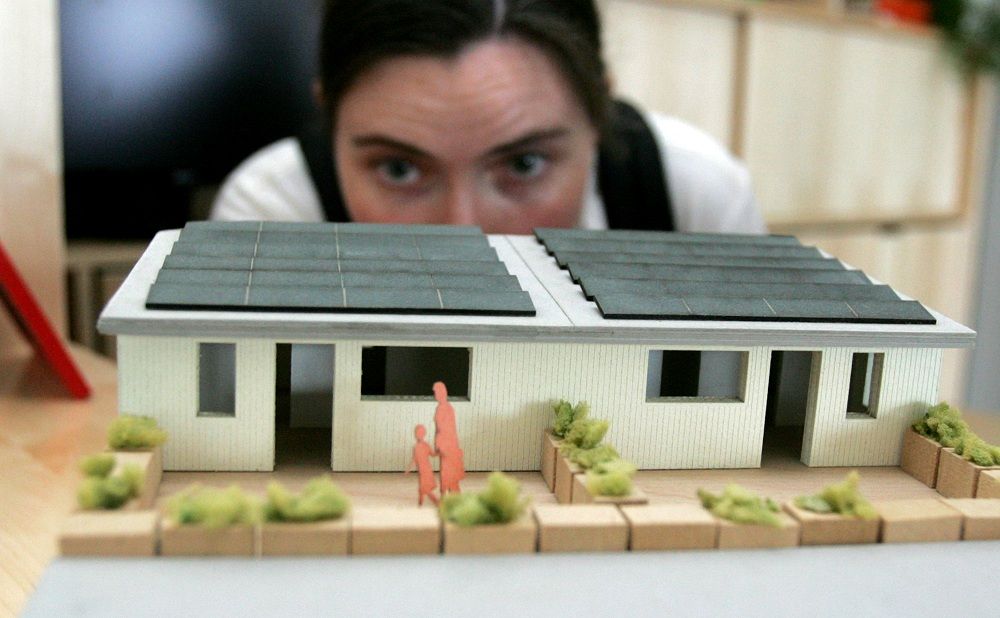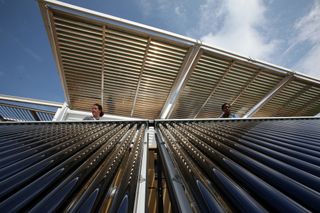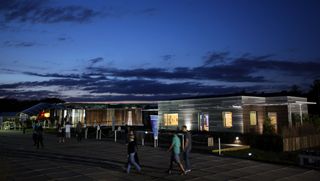Energy Efficient Homes Planned For Solar Decathlon 2013

This Behind the Scenes article was provided to LiveScience in partnership with the National Science Foundation.
Every two years, the U.S. Department of Energy Solar Decathlon encourages competing collegiate teams to design energy-efficient homes that use solar energy.
Launched in 2002, the Solar Decathlon is both an educational and workforce-development program. The competition enlists nearly two dozen teams of students, from various academic backgrounds, who design sustainable homes from the ground up, engineering them with materials provided by major corporate sponsors.
The 2013 Decathlon will see the participation of the newly established Quantum Energy and Sustainable Solar Technologies (QESST) Engineering Research Center, funded by the National Science Foundation and Department of Energy. Two QESST partners — Arizona State University and University of New Mexico — form the Decathlon team ASUNM.
Giving industry an edge

National Science Foundation's Engineering Research Centers program was developed in 1984 to give American industry a competitive edge in the global marketplace. The Engineering Research Centers combine education and research components with industry best practices to teach students engineering fundamentals, how to engineer systems and how to incorporate industry practices. The centers seek to create an environment of innovation and equip students with the tools necessary to advance technology.
QESST was born as an Engineering Research Center in 2011, in partnership with Arizona State University (the lead university), National Science Foundation and the Department of Energy. It seeks to revolutionize the solar powered industry by meeting the growing demand for energy through advances in solar powered science, technology and education. Specifically, the interdisciplinary team is working towards developing more efficient solar powered technologies with improved performance and lower cost.
Sign up for the Live Science daily newsletter now
Get the world’s most fascinating discoveries delivered straight to your inbox.
As with all Engineering Research Centers, QESST enlists the help of industry partners and analysts, academicians, economic and small business organizations, and venture capitalists — all of whom come together to innovate, promote research and commercialize the research output.
By creating more efficient solar technology and enabling production on a large scale, Engineering Research Centers aims to make solar energy the rule, instead of the exception. Participating in the 2013 Solar Decathlon is a unique opportunity for QESST to teach students the benefits of solar energy, as well as how to design efficient homes.
Designing for the Decathlon

"The Solar Decathlon has interested me since I began pursuing architecture as an undergrad at Colorado," said John Cribbs, a graduate student at Arizona State University and competitor in the Solar Decathlon. "This is the perfect opportunity to get my foot in the door and go through the process of designing and realizing my interests. The opportunity to be involved allows me to put every class I've taken as a college student into use and understand what it takes to design a truly beautiful and meaningful building."
The competition throws together a cross-disciplinary group of students to not only build a sustainable home, but also gain knowledge from team members with different backgrounds. Disciplines range from engineering to landscape architecture to behavioral science; everyone brings something unique to the table. As the students brainstorm the home's design, they anticipate potential problems and develop solutions on the spot.
"We started to understand better where systems need to go, where landscaping needs to be for micro-climate creation; we understood orientations, building skins, partition systems, foundation ideas, transportation issues — all of these things began to be shown in each of our schematic designs in different ways," Cribbs said.
The winning home will combine affordability with optimal energy production, will be aesthetically pleasing to consumers, and will maximize efficiency. To achieve those goals, teams must take into account the environmental conditions in their geographic locations, and design accordingly. According to Cribbs, the fact that Team ASUNM is based in the American Southwest lends some unique design opportunities.
"The climate provides for the blurring of indoor and outdoor spaces, year-round exterior spaces such as patios and grilling spaces, and unlimited solar power. The shortage of water in the desert is something that I believe we will be exploiting in our design. It will be important for our team to understand how every bit of water is used and recycled in our design, and how we can integrate efficient water systems," said Cribbs.
The consensus among those involved in the Solar Decathlon is that while solar energy may be a good solution to an energy crisis, research and innovation in the renewable field is essential. QESST and the Solar Decathlon empower students and researchers alike to work in partnership to advance interest in science and engineering and achieve that goal.
"The Solar Decathlon is harnessing the enthusiasm and competitive nature of students, and through this process we hope that future generations of engineers and architects view integrating solar energy into home design as the default option, rather than the exception," says Matthew Fraser, the executive director and sustainability director of QESST.
Editor's Note:The researchers depicted in Behind the Scenes articles have been supported by the National Science Foundation, the federal agency charged with funding basic research and education across all fields of science and engineering. Any opinions, findings, and conclusions or recommendations expressed in this material are those of the author and do not necessarily reflect the views of the National Science Foundation. See the Behind the Scenes Archive.
Most Popular





